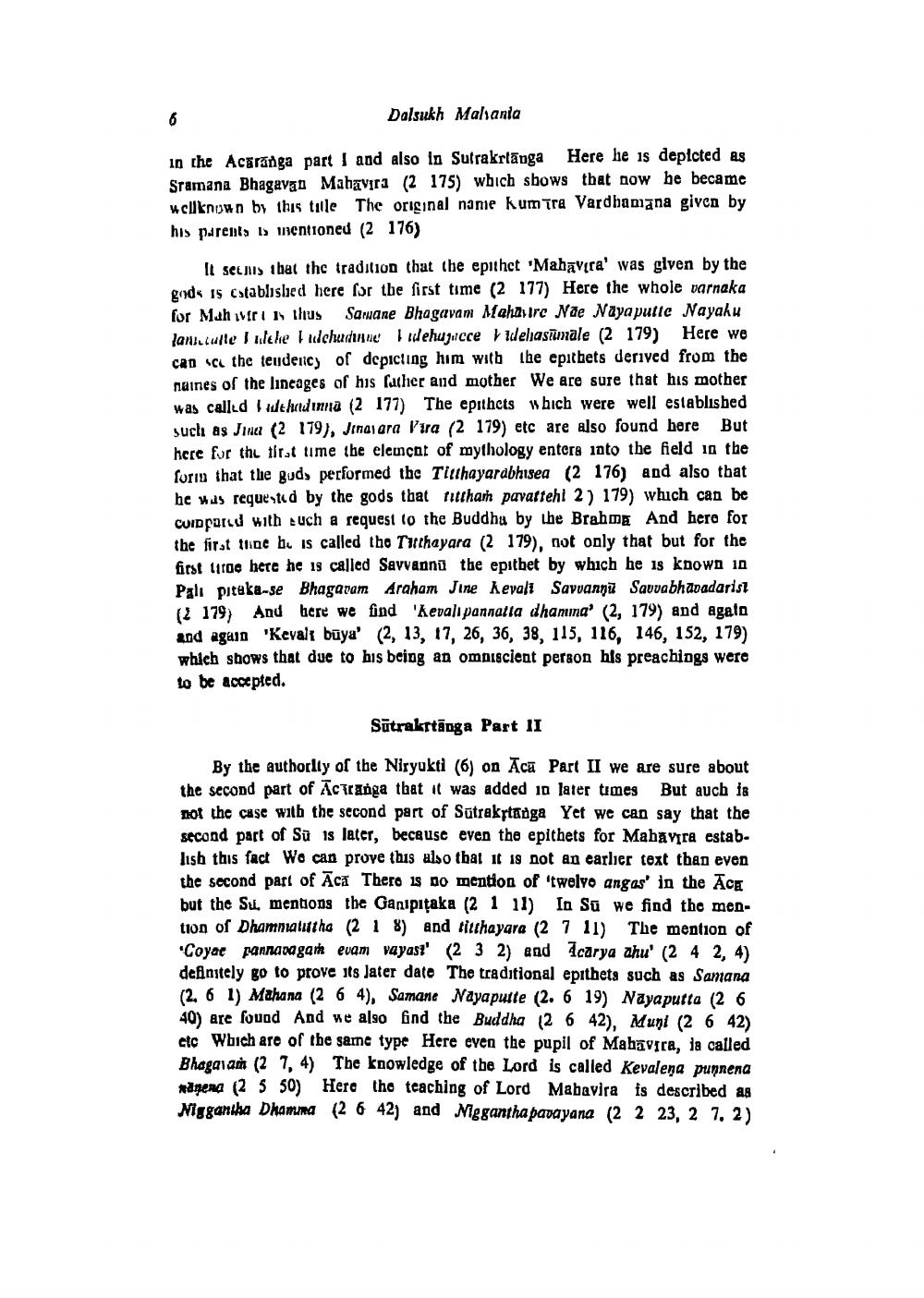________________
Dalsukh Mahania
in the Acaranga part I and also in Sutrakrtānga Here he is depicted as Sramana Bhagavao Mahavira (2 175) which shows that now be became wellknown by this title The original name kum Tra Vardhamana given by his parents to mentioned (2 176)
It sellis ibat the tradition that the epithet 'Mahavira' was given by the gods is cstablished here for the first time (2 177) Here the whole varnaka for Mahverthus Samane Bhagavam Mahavire Nãe Naya putte Nayaku lanculle I weke I uchunune ladehujusce idelasāmale (2 179) Here we can cu the teudency of depicting him with the epithets derived from the naines of the lincages of his father and mother We are sure that his mother was called idehad inna (2 177) The epithcts which were well establisbed such as Jina (2 179), Jonaiara Vira (2 179) etc are also found here But here for the first time the element of mythology enters into the field in the foriu that the guds performed the Titthayarabhisea (2 176) and also that he was requested by the gods that nutihan pavarteht 2) 179) which can be Cuippared with such a request to the Buddhu by the Brahmu And here for the first thing bu is called tho Tuthayara (2 179), not only that but for the first time here he is called Savvannu the epithet by which he is known 10 Pali pitaka-se Bhagavam Araham Jine kevalı Savvannu Sauvabhavadarist (1 179) And here we find 'Kevali pannalta dhanna (2, 179) and again and again 'Kevalt büya' (2, 13, 17, 26, 36, 38, 115, 116, 146, 152, 179) which shows that due to his being an omniscient person his preachings were to be accepted.
Sūtrakrtānga Part II
By the authority of the Niryukti (6) on Aca Part II we are sure about the second part of Āciranga that it was added 10 later times But auch ia not the case with the second part of Sutrakitanga Yet we can say that the second part of Sū is later, because even the epithets for Mahavira establish this fact Wo can prove this also that it 19 not an earlier text than even the second part of Aca Thero is no mention of twelvo angas' in the Aca but the Su, mentions the Ganipitaka (2 1 11) Io Su we find the mention of Dhamnalutha (2 1 8) and titthayara (2 7 11) The mention of 'Coyae pannanagarh evam vayasz' (2 3 2) and Icarya ahu' (2 4 2, 4) definitely go to prove its later date The traditional epithets such as Samana (2. 6 1) Mahana (2 6 4). Samane Nayaputte (2. 6 19) Nayaputta (2 6 40) are found And we also find the Buddha (2 6 42), Muni (2 6 42) etc Which are of the same type Here even the pupil of Mahavira, la called Bhagaian (2 7, 4) The knowledge of the Lord is called Kevalena punnena manena (2 5 50) Here the teaching of Lord Mabavira is described as Wiggantha Dhamma (2 6 427 and Mggantha pavayana (2 2 23, 27, 2)




